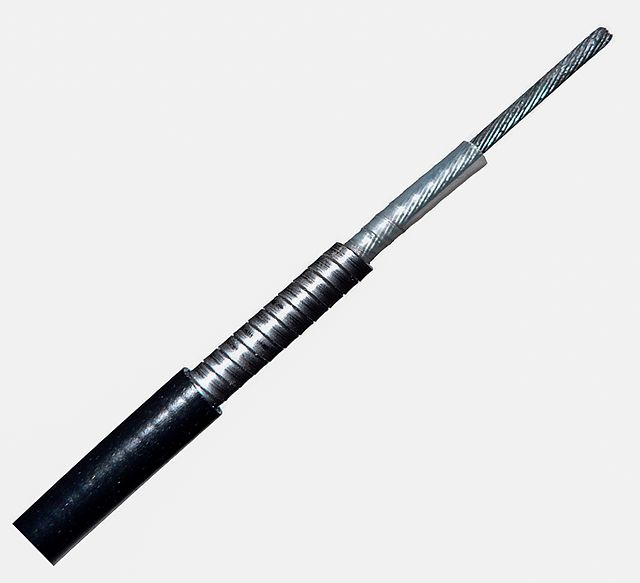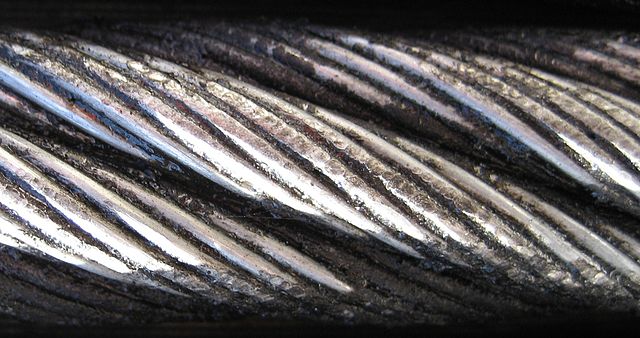A Bowden cable
is a type of flexible cable used to transmit mechanical force or energy by the movement of an inner cable relative to a hollow outer cable housing. The housing is generally of composite construction, consisting of an inner lining, a longitudinally incompressible layer such as a helical winding or a sheath of steel wire, and a protective outer covering.
Cut-away Bowden cable view. From left to right: protective plastic coating, steel structure, inner sleeve to reduce friction, inner cable.
Bowden cables controlling an automobile throttle.
A 1918 Lewis gun on a Foster mounting fitted to an Avro 504K Night Fighter. The gun trigger is operated by a Bowden cable
Bowden cable with a barrel adjuster controlling a bicycle rear derailleur.
Wire rope is composed of as few as two solid, metal wires twisted into a helix that forms a composite rope, in a pattern known as laid rope. Larger diameter wire rope consists of multiple strands of such laid rope in a pattern known as cable laid. Manufactured using an industrial machine known as a strander, the wires are fed through a series of barrels and spun into their final composite orientation.
Inside view of a wind turbine tower, showing the wire ropes used as tendons
Left-hand ordinary lay (LHOL) wire rope (close-up). Right-hand lay strands are laid into a left-hand lay rope.
Right-hand lang lay (RHLL) wire rope (close-up). Right-hand lay strands are laid into a right-hand lay rope.
Right-hand ordinary lay (RHOL) wire rope terminated in a loop with a thimble and ferrule








